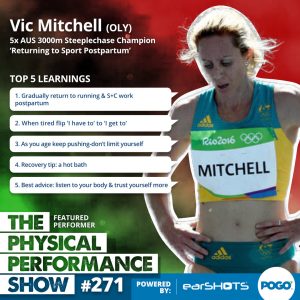Exercising During Pregnancy

In the past, pregnant women have been discouraged from participating in exercise, based on the concerns for the safety of the mother and baby. However, more current research shows that exercise for pregnant women (provided there are no contraindications) is both safe and beneficial.
Physical benefits include:
- Maternal fitness
- Prevention of excessive weight gain
- Psychological well-being
The Royal Australian and New Zealand College of Obstetricians and Gynaecologists (RANZCOG) and the American College of Obstetricians and Gynecologists (ACOG) have published and regularly update concurring position statements with guidelines on safe exercise during pregnancy.
Exercise Guidelines
Current physical activity guidelines for Australian adults recommend being active on most, preferably all, days each week. Adults should aim to accumulate 150-300mins of moderate intensity exercise or 75-150mins of vigorous exercise per week (1). Guidelines recommend that women should be encouraged to continue with their regular aerobic and strengthening exercise routines, provided that there are no contraindications (2). Guidelines also recommend that women be advised that there is no evidence that exercising during an uncomplicated pregnancy is detrimental to either the baby or mother. While previously inactive women or women with pregnancy complications may also benefit from exercise, a medical screening should be conducted prior to beginning a new exercise program to screen for potential conditions that may be contraindications to exercising. There is a current lack of evidence concerning the management of pregnant women with these conditions so exercise programs should be individualised with input from a multidisciplinary team.
Exercise Prescription
Frequency
Previously active women should continue to aim to be active on most, preferably all, days of the week. Previously sedentary or obese women may be prescribed a reduced frequency of exercise i.e. 3-4 days per week, at the commencement of the program, to allow recovery days between sessions.
Intensity
The prescription of exercise program intensity depends on the baseline level of fitness, pregnant or not. For previously inactive women a ‘moderate’ level of exercise intensity is appropriate and adequate to achieve beneficial health outcomes. Women who are already accustomed to moderate intensity exercise should aim to continue this level throughout the pregnancy. There is limited research regarding the upper limits of high intensity exercise during pregnancy – best evidence suggests that women who are already accustomed to high intensity exercise may continue to perform as such, adjusting to personal comfort and tolerance. However, pregnant athletes should be wary of excessive exertion, paying particular attention to ensuring adequate nutrition intake, hydration and the avoidance of overheating (3). It is prudent for pregnant athletes to consult with their health care providers to gain a clear understanding of the risks and potentially place appropriate restrictions (4).
Due to some reports of varying heart rate responses to exercise during pregnancy the most practical and effective way of measuring exercise intensity is via a rating of perceived exertion (RPE). The below table shows the measures of RPE, where 12-14 equates to moderate intensity exercise. For women who are already accustomed to vigorous exercise, a rating between 15-16 (hard exercise) may be appropriate. Another practical way of measuring exercise intensity is the ‘talk test’, where moderate intensity is achieved if the woman is able to hold a conversation while exercising.

Time
As per the Australian Government physical activity guidelines, pregnant women should continue to aim for 150-300 minutes of moderate intensity exercise within a week. This can be achieved by being active on most days for 30 minutes at a time. While there is no evidence to suggest an upper limit for exercise duration, it is wise to avoid exceeding 60 minutes at a time, primarily for concerns of overheating. For previously inactive women, sessions may be prescribed at 15-20 minutes at a time, building up to 30 minute sessions as tolerated.
Type
Assuming there are no contraindications, pregnant women should be able to continue with their regular aerobic and strengthening training. Common modes of aerobic or ‘cardio’ exercise include walking, running, cycling, swimming. The weight-supported nature of stationary cycling and swimming make these popular choices during late stages of pregnancy. If participating in swimming training or water based aerobic type activities, the water temperature must be considered, as per below temperature recommendations. For women who were not previously accustomed to running it is not advised to commence during pregnancy. For previous runners there is currently no scientific evidence to discourage them from running, however adjustments to routine may be required to accommodate for tolerance levels.
Women should aim to complete a strengthening / resistance exercise session on two non-consecutive days within the week. Resistance can be provided by weights or bands and exercise programs should cover all the major muscle groups of the body. Strengthening programs should be within a moderate intensity zone and it is advised to ensure correct breathing techniques throughout (exhale on the effort). It is also advisable to avoid overly heavy lifting and activities that involve breath holding (i.e. valsalva maneuver).
Contact sports or sports with high levels of imbalance (e.g. gymnastics, horse riding) should be avoided during pregnancy due to the risk of abdominal trauma. Scuba diving should also be avoided due to the inability of the fetal blood circulation to filter bubble formation (4). Research has shown that pregnant women who live at sea level were able to tolerate exercise at altitudes up to 6,000 feet, however further research is required in this area, and it is expected that women who reside >6,000 may be able to tolerate exercise at higher altitudes safely.
Special Considerations
During pregnancy there are many significant physiological adaptations that occur involving changes to cardiovascular, respiratory, metabolic and musculoskeletal systems. As a result there are various special considerations to take into account when exercising during pregnancy.
Increase in body weight
The weight gain that is associated with pregnancy results in increased loading on the joints. For this reason as weight gain progresses throughout the pregnancy heavy loading activities may become progressively uncomfortable and weight supported activities such as swimming and cycling may become preferable.
Changes in weight distribution
Another distinct change during pregnancy is a forward shift of centre of gravity due to abdominal weight gain, which can result in balance disturbances (3). It also results in an increased lumbar lordosis meaning that more than 60% of women will experience lower back pain at some point during pregnancy. The ACOG guidelines recommend that strengthening of the abdominal and lower back muscles can minimise this risk (4).
Increase in ligament laxity
The increase in ligament laxity that is associated with pregnancy may have implications for heightened injury risk. For this reason pregnant women should take care with weight-bearing sports that require rapid changes in direction. This is particularly sensible in late stages of pregnancy when balance may be affected by centre of gravity changes as previously mentioned.
Increase in metabolic rate
Exposure to high temperatures via sources such as saunas, hot tubs or fevers has been associated with congenital birth defects. Exercise would not be expected to raise core body temperature to a concerning degree, however due to lack of evidence in this area it is suggested that pregnant women should take precautions to avoid raising temperature during exercise. Precautions include avoiding exercise in higher heats and humidities, wearing loose fitting clothing and ensuring adequate hydration.
General guideline for water temp:
A 45 minute session in water up to 33.4˚C appears unlikely to raise maternal core temperatures above 38˚C (where 39˚C is considered the dangerous threshold).
General guideline for air temp:
Up to 35 minutes of high intensity exercise at air temperatures of up to 25˚C at 45% humidity is unlikely to raise temperatures above 39˚C.
Enlarged uterus
As the uterus continues to grow throughout pregnancy, when lying supine (on your back) the weight of the uterus can apply pressure on the inferior vena cava and obstruct venous blood return, which has implications on fetal blood supply. Therefore, in the second and third trimesters it is best to avoid exercising in a supine position for a prolonged period of time. Exercises can be modified to be conducted either seated or standing (2). There is also emerging evidence to support that it is best to avoid sleeping in the supine position (3).
Decrease in blood pressure
Systemic vascular resistance decreases in early pregnancy and reaches a low between 14-24 weeks, before rising progressively throughout the rest of the pregnancy. This results in a decrease in blood pressure, particularly between 14-24 weeks (5). As a result of this it is wise to avoid rapid reductions to blood pressure from position changes, for example moving between lying, sitting and standing, to minimise the risk of dizziness or fainting. Exercise should always be followed by a slow cool down and stopping suddenly should be avoided (2,4).
Weakened pelvic floor
Pelvic floor muscles are stretched during pregnancy and therefore weakened. Activities that involve jumping or bouncing may add extra pressure to the pelvic floor and are best avoided. Pelvic floor exercises should be performed throughout pregnancy and should also be continued postpartum. For advice on pelvic floor muscle training consult with your Women’s Health Physiotherapist.
Warning Signs
While exercise is generally safe and beneficial if pregnant women are suffering from any of the following warning signs exercise should be discontinued and medical attention should be sought;
- Chest pain
- Unexplained shortness of breath
- Dizziness, fainting, headache
- Muscle weakness affecting balance
- Calf pain, swelling or redness
- Sudden swelling of ankles, hands or face
- Decreased fetal movement
- Vaginal bleeding or amniotic fluid leakage
- Uterine contractions
Post Partum
The results of several studies have shown that women’s participation in exercise programs diminishes after childbirth, which can lead to increased risk of obesity and therefore other cardiovascular complications. The postpartum period is an opportune time for obstetric care and health professionals to reinforce the importance of exercise as part of a healthy lifestyle (4). Studies have suggested that the completion of exercise programs in the postpartum period may be beneficial for reducing postpartum fatigue (6) as well as playing a large role in postpartum weight loss (8). Exercise routines can be progressively reintroduced following childbirth as soon as it is medically safe to do so, which will depend on the mode of delivery (vaginal vs cesarean) and the presence of any medical or surgical complications. As with exercise during pregnancy and in fact all exercise, an individualised approach is required based on the women’s specific needs and tolerance levels.
Pelvic floor & abdominal exercises
Pelvic floor exercises should be continued in the immediate postpartum period and abdominal exercises should be commenced to reduce the risk of diastasis recti (abdominal separation).
Postpartum exercise & lactation
Research has shown that moderate intensity exercise that is supported with adequate and appropriate nutritional intake has no detrimental effects on milk composition and volume in breastfeeding mothers (7).
Recent episodes of The Physical Performance Show with Featured Performers have discussed their experiences with returning to sport postpartum. Click the image to the episodes below:
Summary
Exercise during pregnancy is both safe and beneficial in pregnant women with no contraindications provided the exercise guidelines and special considerations are followed. Exercise should be continued and progressively graded back to normal activity levels in the postpartum period as soon as it is safe to do so. Exercise both during pregnancy and the postpartum period has a wide range of physiological and psychological benefits.

Eliana Lonsdale (APAM)
POGO Physiotherapist
Book an appointment with Eliana today
Featured in the Top 50 Physical Therapy Blog
References
- Australian Government Department of Health (2019). Australia’s Physical Activity and Sedentary Behaviour Guidelines and the Australian 24-Hour Movement Guidelines. Retrieved from https://www1.health.gov.au/internet/main/publishing.nsf/Content/health-pubhlth-strateg-phys-act-guidelines
- The Royal Australian and New Zealand College of Obstetricians and Gynecologists, (2020). Exercise During Pregnancy. C-Obs 62. https://ranzcog.edu.au/RANZCOG_SITE/media/RANZCOG-MEDIA/Women%27s%20Health/Statement%20and%20guidelines/Clinical-Obstetrics/Exercise-during-pregnancy-(C-Obs-62).pdf?ext=.pdf
- Warland J. Back to basics: avoiding the supine position in pregnancy. J Physiol. 2017;595(4):1017–1018. doi:10.1113/JP273705
- American College of Obstetricians and Gynaecologists, (2020). Physical Activity and Exercise During Pregnancy and the Postpartum Period. Vol 135:4.
- Pacheco, L. D., Costantine, M. M., & Hankins, G. D. (2013). Physiologic changes during pregnancy. Clinical pharmacology during pregnancy, 5-16.
- Liu, N., Wang, J., Chen, D. D., Sun, W. J., Li, P., & Zhang, W. (2020). Effects of exercise on pregnancy and postpartum fatigue: A systematic review and meta-analysis. European Journal of Obstetrics & Gynecology and Reproductive Biology.
- Carey GB, Quinn TJ . Exercise and lactation: are they compatible? Can J Appl Physiol 2001; 26: 55–74
- Nascimento, S. L., Pudwell, J., Surita, F. G., Adamo, K. B., & Smith, G. N. (2014). The effect of physical exercise strategies on weight loss in postpartum women: a systematic review and meta-analysis. International journal of obesity, 38(5), 626-635.












